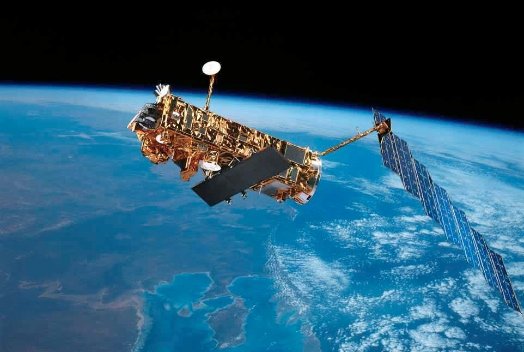Today GeoLog features a guest post by Mona Behl, a Visiting Fellow at the American Meteorological Society. Mona explains why Earth observation satellites are so important and why the future of Earth observations, sciences and services might be at risk.
The year 1957 marked the birth of Sputnik I, the world’s first artificial satellite to be launched in space. This launch ushered in an exciting era of growth and change in science. Over the past 50 years, the advent of Earth observation systems (including ground, oceanic, atmospheric, and satellite-based resources) has truly revolutionized the way we see our planet. Satellites are not only our “windows to the universe”; they also provide a unique and revolutionary vantage point from space with global images and data about the Earth and its environment. The exploration, exploitation and application of satellite data drive Earth observations, science and services (OSS) and society as a whole.
However, the fate of Earth OSS appears to be in peril.
A recent report by the American Meteorological Society points out that federal budget deficits and economic downturn are putting a strong hold on building and maintaining Earth OSS. The findings of this report stem from a workshop held by the AMS Policy Program. Describing the technological advances is relatively easy compared to measuring the economic and social benefits of Earth OSS. This study reveals the importance of Earth OSS and how it is integrated into the very fabric of our society.
Whereas space-based observations provide a major contribution to the Earth observation system, observations that are based on land, air and sea are important and provide us with an accurate, global, yet independent view of the Earth. Our society faces a number of challenges today. We rely on Earth OSS not only for increasing the accuracy and breadth of weather information, forecasting and warnings, but also for improving the management and protection of terrestrial, coastal, and marine ecosystems. To understand, assess, predict, mitigate, and adapt to the changing climate, Earth OSS is important. Observation-based data not only serves the government but also has immense private, academic, nonprofit, and public use. From national security to providing information and understanding about environmental factors affecting human health to water resource management, to combating desertification and promoting sustainable agriculture, Earth OSS are imperative to our well-being.
Despite the importance and interconnectedness of Earth OSS to society, why does its future still look grim?
Another study conducted by the U.S. National Research Council concludes that, in the near term, budgets for NASA’s science program will remain inadequate to meet the country’s pressing needs. As a result, the U.S. may have to rely on data from European or other satellites.
However, Europe seems to be headed for a crash as well. In April this year, the European Space Agency declared the demise of Envisat, the world’s largest Earth observation spacecraft. Envisat contributed valuable information to Europe’s Global Monitoring for Environmental Security program by providing measurements of atmospheric chemistry, rising sea levels, plate tectonics, greenhouse gas emissions, and land subsidence. The end of this mission is likely to lead to significant gaps in satellite data.
The decline of Earth OSS may be a beacon of a future calamity.
The quality of life, as well as the ability to protect our nations, manage our environment, and adapt to a changing climate are all dependent on the use of the Earth observation systems. Given the enormous potential benefits that Earth OSS affords humankind, society faces a need to rethink priorities and put a concerted effort into ensuring the adequacy and continuity of Earth OSS over the short, intermediate, and longer term.
One of the key recommendations the AMS report makes is to foster private-public collaborations in order to improve and expand Earth OSS. Interagency participation in addition to private-public collaborations is required not only at a national level but at the international level as well. For years, the science and technology communities have discussed and understood the need to link our Earth to its observation systems. However, to ensure the success and growth of our Earth OSS, investment in sound government policies is critical.
The need to monitor and observe the Earth’s environment is now more urgent than ever.
By Mona Behl, American Meteorological Society

